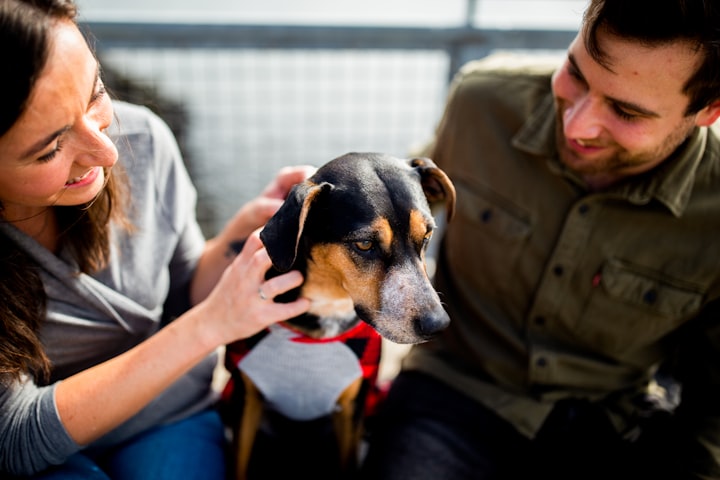is it important to train your dog?
A Secret to using your dog's natural intelligence?
I have a dog and I also grew up with a dog... By having a dog, you and your child will be much happier.
Dogs are intelligent and love to learn. Training a dog's brain is an important aspect of their overall well-being and development. It helps stimulate their mental capacities, keeps them engaged, and can also address behavioral issues. Here are some ways to train a dog's brain:
Basic Obedience Training: Teaching commands like sit, stay, come, and lie down is essential. This builds a foundation for further training.
Positive Reinforcement: Use treats, praise, and affection to reward good behavior. This reinforces the connection between the action and the positive outcome.
Clicker Training: This method uses a clicker to mark desired behavior, followed by a reward. It's effective in pinpointing the exact moment of the desired behavior.
Problem Solving Toys: Use interactive toys that require the dog to figure out how to get a treat. This stimulates their problem-solving abilities.
Scent Work: Engage your dog's sense of smell by hiding treats or toys for them to find. This taps into their natural hunting instincts.
Teach New Tricks: Beyond basic commands, teaching fun and challenging tricks like rolling over, playing dead, or fetching specific items can be mentally stimulating.
Agility Training: This involves navigating obstacles like tunnels, jumps, and ramps. It requires focus, coordination, and mental agility.
Socialization: Allowing your dog to interact with other dogs and people in a controlled environment helps them learn how to behave appropriately.
Puzzle Toys: These toys require the dog to solve a puzzle to get a treat. They can range from simple to complex, providing different levels of mental challenge.
Change the Routine: Dogs thrive on routine, but introducing small changes can make them think and adapt. This could be as simple as rearranging furniture or taking a different route on walks.
Training Games: Play games like "find it," where you hide treats around the house for your dog to discover.
Verbal Communication: Talk to your dog. They may not understand the words, but they can pick up on tone and may associate certain sounds with specific actions.
Stay Consistent: Consistency is crucial in dog training. Everyone in the household should use the same commands and rules.
Short, Frequent Sessions: Dogs have relatively short attention spans. Keep training sessions brief and engaging.
Be Patient and Positive: Training takes time, especially with complex tasks. Always be patient and offer encouragement.
Remember that every dog is unique, and what works for one may not work for another. Pay attention to your dog's preferences and abilities, and adjust your training methods accordingly. Additionally, consider seeking professional help if you're struggling with specific training issues or if your dog has behavioral challenges that require specialized expertise.
What about the interaction between trained dogs and children?
A well-trained dog is generally safer around children because they are less likely to engage in unwanted behaviors like jumping, nipping, or being overly excitable. They are also more likely to respond to commands that can prevent potentially dangerous situations.
Socialization: Training often includes socialization, which means exposing the dog to various environments, people, and other animals. This is particularly important when it comes to children. A well-socialized dog is less likely to become anxious or fearful around kids.
Commands for Interaction: A trained dog can be taught specific commands that are important for interacting with children, such as "gentle," "stay," or "leave it." These commands can be crucial for ensuring a positive and safe interaction.
Understanding Boundaries: Training can help a dog understand boundaries and respect personal space, which is particularly important with children who may not always know how to interact with a dog appropriately.
Predictable Behavior: Trained dogs tend to have more predictable behavior, which can make them easier for children to understand and feel comfortable around.
This post contains affiliate link, which means that if you click on the product link, I may receive a small commission at no extra cost to you. This helps me to continue creating valuable content for you. Thank you for your support!
If you want to discover amazing way to train your dog online, click here now.






Comments
There are no comments for this story
Be the first to respond and start the conversation.